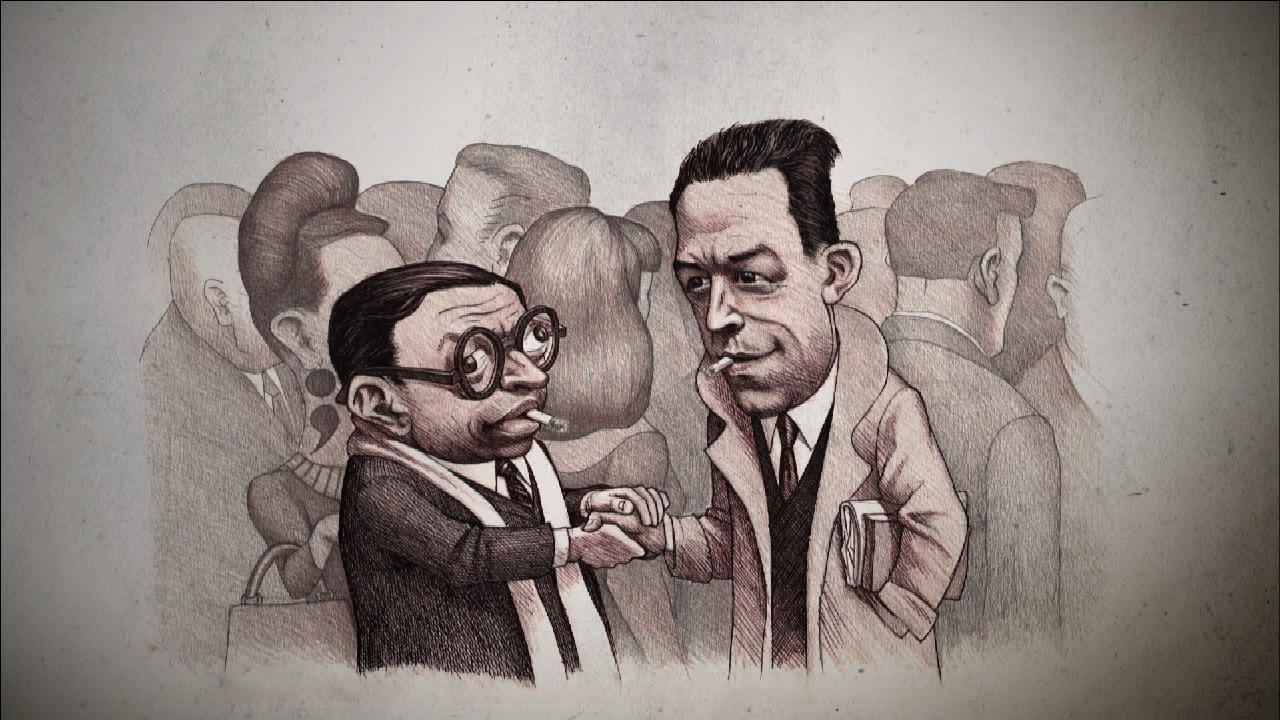 Image courtesy of France Channel, “Sartre Camus: une amitié déchirée,” (2014)
Image courtesy of France Channel, “Sartre Camus: une amitié déchirée,” (2014)
Paris has long been synonymous with literary life. In the 20th century, cafés like Les Deux Magots and Café de Flore were crucibles for existentialism, modernism, and avant-garde thought. Jean-Paul Sartre, Simone de Beauvoir, James Baldwin, and Ernest Hemingway all scribbled notes, debated philosophy, and observed the world over endless cups of coffee. But in a city transformed by tourism, rising prices, and digital life, do Paris’s literary cafés still have the same magic?
The Legacy of the Café Culture
Parisian cafés were once more than places to drink coffee — they were extensions of writers’ studies. Sartre famously said that he wrote entire chapters of Being and Nothingness at a café table. These spaces provided warmth, company, and a vantage point for watching life unfold on the boulevard. Intellectuals and artists cross-pollinated ideas, turning ordinary cafés into incubators of cultural revolution.
The Big Names: Pilgrimage Sites or Living Spaces?
Today, Les Deux Magots and Café de Flore remain icons. They are beautifully preserved, with polished brass and mirrored interiors that evoke their golden age. But they are also tourist magnets, where a single café crème can cost over €7. For some, that makes them feel more like museums than creative refuges.
Are They Still Creative Hubs?
Writers do still go — but often laptop in hand, not notebook. Some locals argue that the atmosphere has shifted: conversations are less likely to be about literature and more about business or social media strategy. Yet, for visitors hoping to soak up the spirit of Sartre, simply sitting there can feel like a pilgrimage.
Beyond the Icons: The New Generation of Literary Cafés
The literary spirit has not disappeared — it has moved. A new wave of bookish cafés and hybrid spaces has emerged across Paris:
-
Shakespeare & Company Café (5th arrondissement): Attached to the legendary English-language bookstore, this café offers plant-based pastries and a view of Notre-Dame — perfect for journaling or reading.
-
Le Café de la Mairie (3rd arrondissement): Known as a quiet writer-friendly spot overlooking Place des Vosges.
-
Café de l’Industrie (11th arrondissement): A bohemian haunt favored by young creatives.
-
Le Bal Café Otto: Housed in a former 1930s dance hall, combining art exhibits with a café setting.
These spaces echo the spirit of earlier literary cafés by fostering quiet contemplation and conversation — often with more affordable prices.
The Changing Ritual of Writing
One major shift is the role of technology. Where once a café table might have been covered in cigarette ash and manuscript pages, today it glows with laptop screens. Wi-Fi, charging stations, and remote work culture have made cafés functional offices as much as creative retreats. This democratization has kept the tradition alive, even if the tools have changed.
Do They Still Inspire?
Yes — but differently. The spirit of the literary café now coexists with digital nomad culture and Instagrammers photographing their cappuccinos. For writers seeking inspiration, the trick is to look beyond the touristy façades and find smaller, quieter cafés in less trafficked neighborhoods. The essence remains: a space where time slows, ideas brew, and you can be simultaneously alone and surrounded by life.
Tips for a Literary Pilgrimage
-
Go early or late: Avoid peak lunch hours for a quieter experience.
-
Bring a notebook: Even in the age of laptops, handwriting can spark creativity.
-
Venture beyond Saint-Germain: Explore the Marais, Belleville, and Canal Saint-Martin for cafés with local flavor.
-
Read before you go: Dip into Sartre, de Beauvoir, or Hemingway to connect with the past.
Paris’s literary cafés may no longer be the epicenter of radical philosophy, but they still offer something rare: a place to pause, observe, and think. In a world of distraction, that might be more valuable — and more revolutionary — than ever.